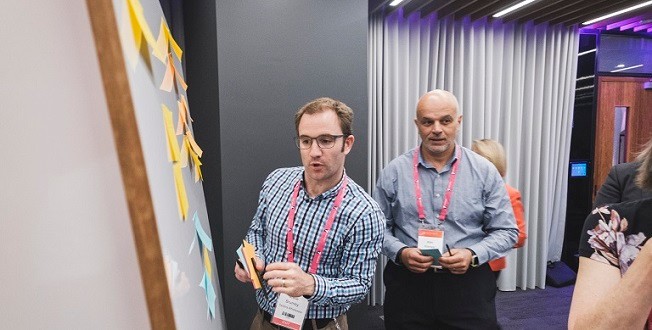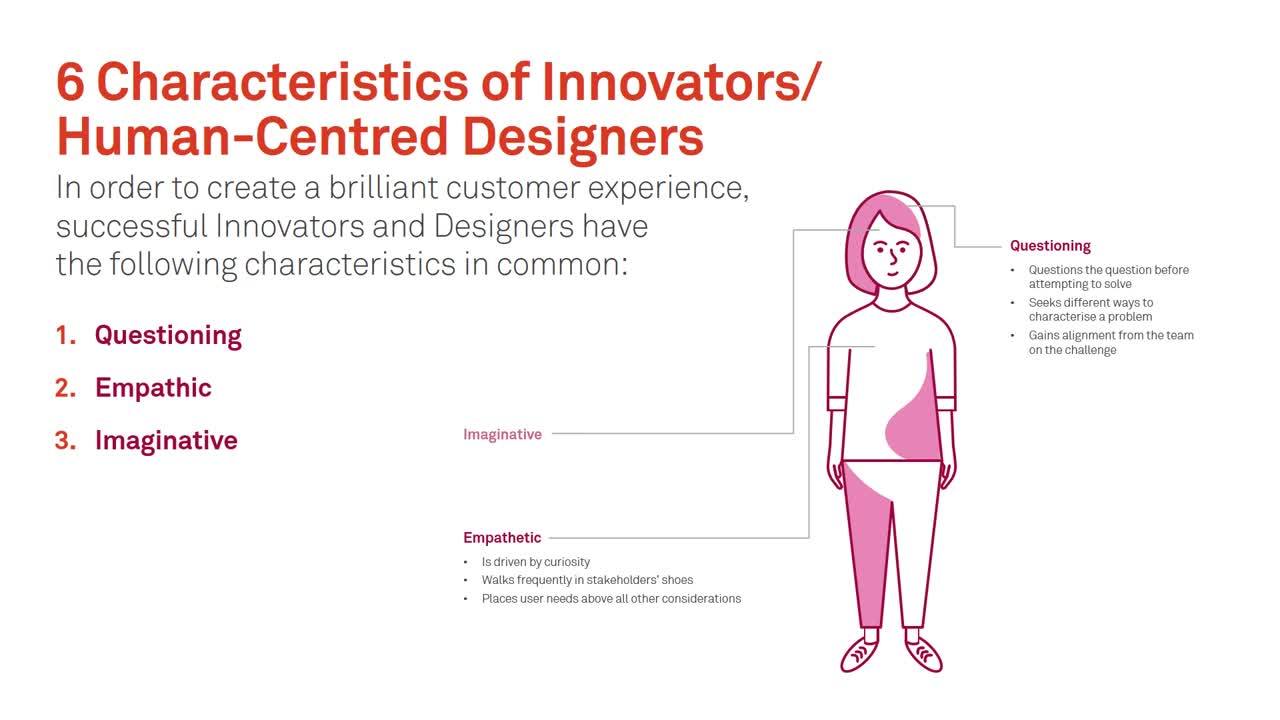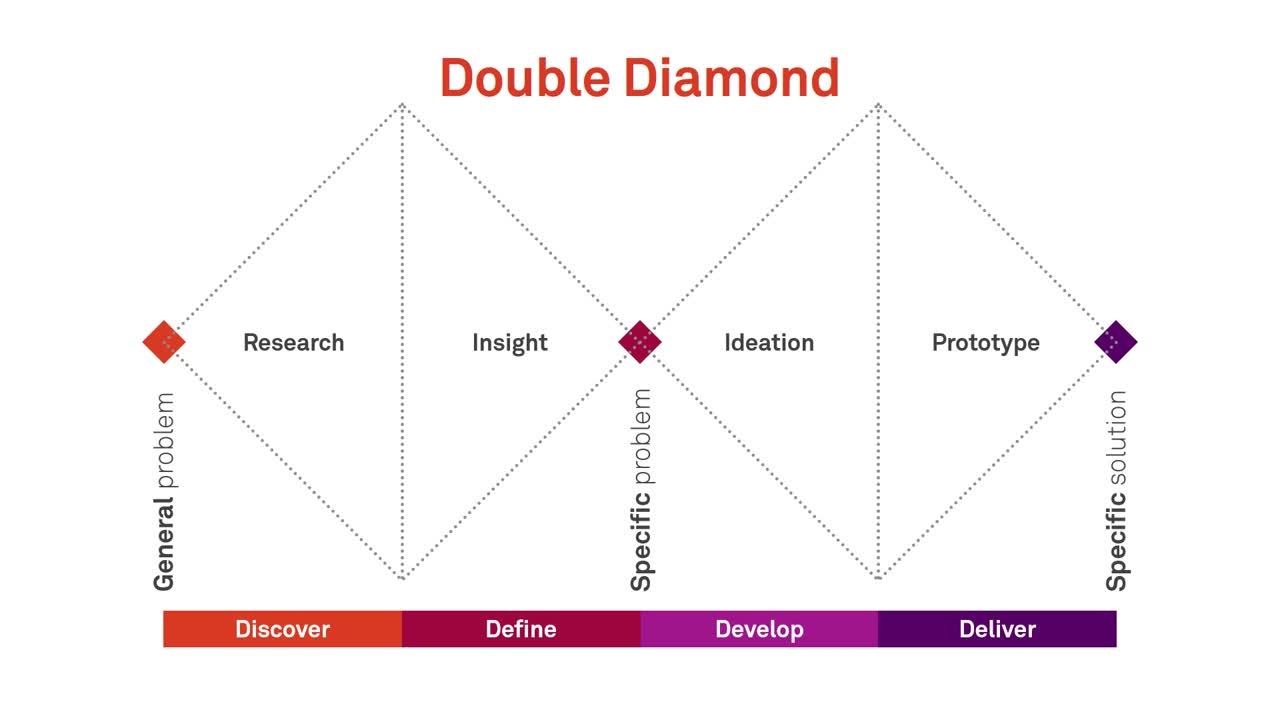Does your team have the six characteristics that can improve product design?

Customers’ creative thinking and human-centred design skills were put through their paces at a workshop led by Jane Curtain, Telstra Senior Design and Research Lead.
Human-centred design (HCD) is a creative approach to problem-solving that puts the customers’ needs at the core. And it’s important because research from the Design Institute found that design-centric companies were found to be 211 per cent more profitable than those that aren’t.
Human-Centred Design is a way of working that helps us integrate people’s needs with business opportunities and technical possibilities
Jane outlined the six characteristics that leaders should cultivate in their teams to be successful with the human-centred design method. These are:
1. Curious and questioning: what customer problem are we trying to solve?
2. Empathic: what are the frustrations or concerns our customers feel?
3. Imaginative: how can we best solve these frustrations?
4. Iterative: how can we continuously improve our initial thinking?
5. Visual: how can we visualise our ideas to provide a new lens on problems
6. Collaborative: who do we need to involve to ensure our proposed solution hits the mark?

Jane explained that human-centred design typically follows a ‘double-diamond’ process of widening and narrowing focus across four stages. These stages are:
1. Discover: research the problem through customer research
2. Define: pinpoint the problem by understanding the customer insights
3. Develop: iteratively ideate, prototype, test and learn
4. Deliver: deliver a solution that addresses the problem.

Round Robin Brainstorming
Attendees were then invited to take part in a round robin brainstorm. Each member of the audience asked to write down one idea for stopping cyber bullying among school children.
Each attendee then passed their idea to another who wrote a short critique before passing the idea to a third. The last contributor reviewed both the idea and the critique before attempting to solve the problems raised and improve the initial idea.
Participants were not allowed to talk to each other until after the third person had completed their review. While it might seem counter-intuitive for a brainstorm, this intentional lack of debate and collaboration in the early stages is actually a way to ensure more voices are heard.
“When a group throws ideas around without ensuring every member gets to individually contribute, it can quickly end up deferring to the HiPPO - the highest paid person’s opinion. But that means a lot of potentially great ideas are lost,” Jane said. “Round robin brainstorms are very useful for avoiding the pitfalls of typical group sessions. They promote group authorship and help you to think of new and creative ideas.”
Ian Summers, Operations Director of Enablis was impressed with the approach. “This session was excellent. It is a really fresh, easy and novel way to get my team’s creative minds to work,” Ian said.
“I like the fact you don’t know the outcome, and it takes away egos. You can see the thinking as people work through ideas and a quick idea became visible and more formalised.
“I will be taking it back to our company to try it out.”
